Are you an adventurer looking to explore various environments? Whether you’re planning a camping trip, hiking expedition, or simply want to be prepared for unexpected situations, knowing how to build a shelter in different environments is crucial. From the snowy mountains to the dense forests and scorching deserts, each environment provides unique challenges when it comes to building a shelter. In this article, you’ll learn valuable tips and techniques on how to construct a shelter that will keep you safe and comfortable no matter where you find yourself. So, grab a notepad and get ready to enhance your survival skills!
Curious to know the secrets behind building a shelter in different environments? Look no further! In this article, you’ll discover the essential steps and considerations for constructing a shelter that can withstand the elements. From assessing the terrain and available materials to choosing the right design for specific environments, we’ve got you covered. Whether you’re braving the freezing temperatures of the tundra or seeking shade in the blistering heat of the desert, you’ll be equipped with the knowledge to build a shelter that suits your needs. So, get ready to become a shelter-building expert and embark on your next adventure with confidence! Building a shelter in different environments requires careful planning, knowledge of the specific environment, and the use of appropriate materials. Whether you find yourself in a tropical rainforest, arctic region, desert, mountainous area, coastal region, urban environment, forested area, or even a cave, there are unique challenges and considerations to keep in mind. In this article, we will explore the steps you need to take and the factors to consider when constructing a shelter in each of these environments.
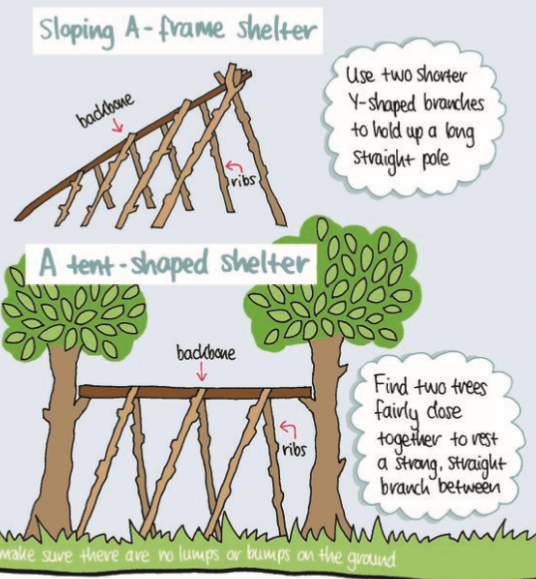
This image is property of scottishwildlifetrust.org.uk.
Preparing for Shelter Construction
Before diving into the specific considerations for each environment, it is important to establish a foundation of knowledge that applies universally. Regardless of the location, assessing the environment, gathering necessary materials, and ensuring safety measures are essential steps in preparing for shelter construction.
Assessing the Environment
Start by thoroughly assessing the environment in which you intend to build your shelter. Take note of the climate, weather patterns, and any potential hazards such as flooding, avalanches, or extreme temperatures. This information will guide your decision-making process and help you design a shelter that can withstand the specific challenges of the environment.
Gathering Necessary Materials
Once you have assessed the environment, gather the necessary materials for your shelter construction. Consider the availability of materials in your surroundings and select those that are suitable for the environment. In some cases, you may need to bring certain materials with you if they are not readily available.
Ensuring Safety Measures
Prioritize safety when constructing a shelter. Ensure that your shelter is built on stable ground and is structurally sound. Take precautions to protect against potential hazards such as falling debris, natural disasters, or wildlife encounters. It is also important to consider fire safety and have an emergency evacuation plan in place.
Now, let’s explore the specific considerations and steps for building a shelter in different environments.
Shelter Construction in Tropical Rainforests
Tropical rainforests are characterized by their high humidity, heavy rainfall, and dense vegetation. When constructing a shelter in this environment, consider the following:
Selecting an Ideal Location
Choose a location that offers protection from potential hazards such as flooding or falling trees. Look for elevated ground that is not prone to flooding. Avoid areas near rivers or streams that may rise rapidly during heavy rainfall.
Creating a Sturdy Foundation
In tropical rainforests, the ground can be soft and prone to erosion. Create a sturdy foundation by clearing the ground of vegetation and laying down a layer of rocks or logs. This will help prevent moisture from seeping into your shelter.
Constructing the Framework
Construct a framework using sturdy branches or bamboo. These materials are abundant in tropical rainforests and withstand the high humidity. Secure the framework using strong vines or ropes.
Utilizing Natural Materials
Take advantage of the abundant natural materials in the rainforest. Use large leaves or palm fronds to create a roof that can withstand heavy rainfall. Weave smaller branches or vines between the framework to create walls that offer both ventilation and privacy.
Shelter Construction in Arctic Regions
Arctic regions pose unique challenges with their extreme cold temperatures and snowy landscapes. When constructing a shelter in this environment, consider the following:
Understanding the Cold Climate
Before you start building, familiarize yourself with the cold climate and the dangers it can pose. Frostbite and hypothermia are real risks, so dress appropriately and take frequent breaks to warm up.
Insulating the Shelter
Insulation is crucial in arctic regions to retain heat. Use insulating materials such as animal hides, moss, or even snow to create a barrier between the inside of your shelter and the outside cold.
Building a Snow Block Structure
In areas with heavy snowfall, constructing a snow block structure is an effective way to create a shelter. Pack snow tightly into blocks and assemble them to create walls. Make sure to leave an entrance and ventilation holes.
Considering Ventilation
While insulation is important, proper ventilation is also necessary in arctic regions to prevent condensation and maintain air quality. Include ventilation holes or a chimney in your shelter design.
Shelter Construction in Deserts
Deserts are known for their extreme heat, lack of water, and sandstorms. When constructing a shelter in this environment, consider the following:
Protecting against Extreme Heat
Building a shelter that provides shade and insulation against extreme heat is crucial. Position your shelter in a way that maximizes shade throughout the day and use materials that reflect sunlight.
Creating Shade Structures
In addition to positioning your shelter strategically, consider creating additional shade structures using materials like cloth or palm fronds. These structures can provide relief from the direct heat of the sun.
Using Lightweight and Reflective Materials
Choose lightweight and reflective materials for your shelter construction in deserts. This will help prevent overheating and keep the interior as cool as possible.
Designing for Sandstorms
Deserts are prone to sandstorms, so make sure your shelter is capable of withstanding these conditions. Reinforce the structure, seal any openings, and consider using sandbags for added protection.
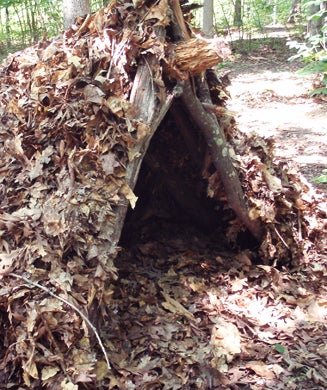
This image is property of www.outdoorlife.com.
Shelter Construction in Mountainous Areas
Mountainous areas present challenges such as harsh winds, steep slopes, and the risk of avalanches. When constructing a shelter in this environment, consider the following:
Finding a Stable Location
Choose a stable location away from avalanche zones and potential falling rocks. Look for areas that offer natural windbreaks, such as cliffs or trees.
Building on Elevated Terrains
To mitigate the risk of flooding or rapid weather changes, build your shelter on elevated terrains. This will also provide a better view and protection against wildlife.
Constructing Against Harsh Winds
Mountainous areas are often characterized by strong winds. Ensure that your shelter is well-anchored and capable of withstanding these winds. Reinforce the structure and use materials that can withstand high gusts.
Considering Avalanches
If you are in an avalanche-prone area, consider constructing your shelter partially underground. Use sturdy materials such as rocks or logs to create a protective barrier against potential avalanches.
Shelter Construction in Coastal Areas
Coastal areas are subject to high humidity, strong winds, and the risk of erosion. When constructing a shelter in this environment, consider the following:
Accounting for Humidity and Salinity
Coastal areas are often humid, which can lead to mold and deterioration of materials. Choose materials that are resistant to humidity and saltwater corrosion.
Choosing Durable Materials
Saltwater, strong winds, and exposure to the elements can quickly deteriorate materials. Use durable materials such as concrete, metal, or treated wood to withstand the coastal environment.
Designing for Strong Winds and Storms
Coastal areas are prone to strong winds and storms. Design your shelter with a sturdy structure, reinforced windows, and a well-sealed roof to prevent water infiltration.
Protecting against Erosion
Coastal areas are also susceptible to erosion. Consider building your shelter on raised platforms or piles to protect it from the shifting shoreline.
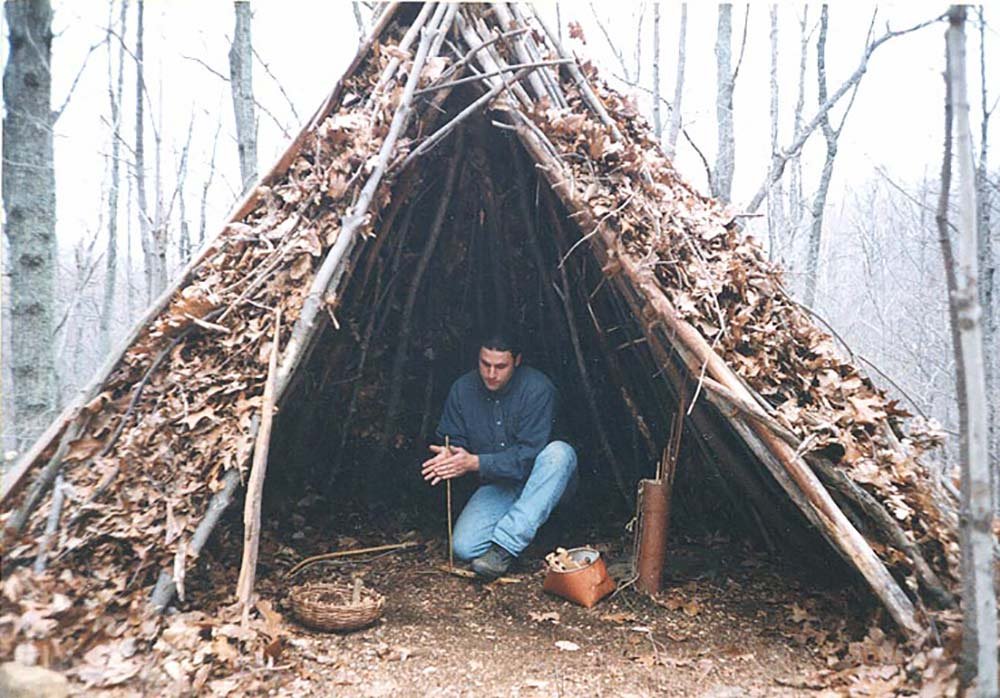
This image is property of www.popsci.com.
Shelter Construction in Urban Environments
Urban environments present unique challenges such as limited space, noise pollution, and security concerns. When constructing a shelter in this environment, consider the following:
Finding Suitable Spaces
Identify suitable spaces within the urban environment where you can legally build a shelter. Look for abandoned buildings, public parks, or designated camping areas.
Utilizing Existing Structures
In an urban environment, it is often easier and more practical to utilize existing structures. For example, repurpose a shipping container or convert a rooftop into a sheltered space.
Addressing Noise and Pollution
Urban environments can be noisy and polluted. Consider incorporating soundproofing materials and air filtration systems into your shelter to create a more comfortable living environment.
Maximizing Security
In urban environments, security is a major concern. Take measures to secure your shelter by reinforcing doors and windows, installing security systems, and choosing locations that offer good visibility.
Shelter Construction in Forested Areas
Forested areas offer natural resources but also pose challenges such as fire hazards and ecosystem impact. When constructing a shelter in this environment, consider the following:
Clearing the Area Safely
Before construction, clear the area of any debris or dry vegetation that could pose a fire hazard. Ensure you follow local regulations and guidelines to prevent wildfires.
Building a Basic Structure
In forested areas, simplicity is key. Build a basic structure using materials such as logs or branches. Avoid using materials that can easily catch fire or harm the surrounding ecosystem.
Ensuring Fire Safety
Fire safety is crucial in forested areas. Use fire-resistant materials, install fire extinguishers, and create a safe distance between your shelter and any potential fire hazards.
Minimizing Impact on Ecosystem
Take care to minimize your impact on the surrounding ecosystem. Avoid cutting down large trees or disrupting animal habitats. Leave the area as undisturbed as possible when you leave.
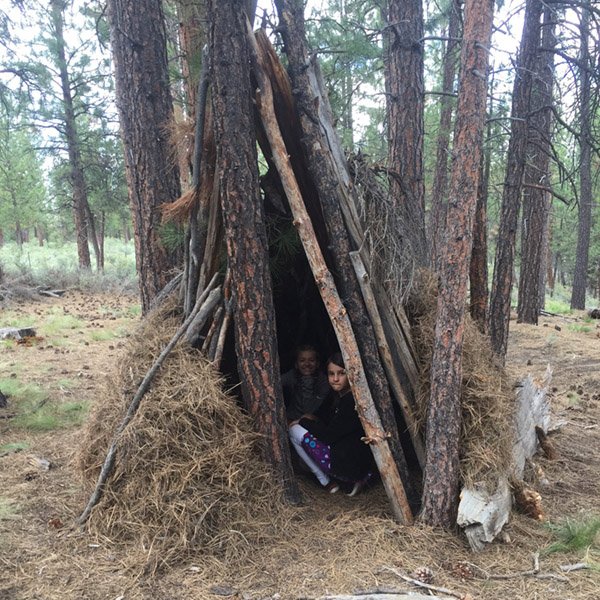
This image is property of seretraining.us.
Shelter Construction in Caves
Caves offer natural shelter but also present safety concerns such as poor air quality and unstable terrain. When constructing a shelter in this environment, consider the following:
Assessing Cave Safety
Before settling in a cave, assess its safety. Look for signs of instability, such as loose rocks or cracks. Ensure there is proper ventilation and be cautious of potential hazards like bats or swift water currents.
Creating Basic Infrastructure
In a cave, creating a basic infrastructure is essential for comfort and livability. Clear the floor of debris, set up a sleeping area, and create storage for your belongings.
Enhancing Comfort and Livability
Add amenities to make your cave shelter more comfortable and livable. Install lighting, create seating areas, and consider insulation against temperature fluctuations.
Maintaining Air Quality
Caves can have poor air quality due to lack of ventilation. Ensure that there is proper airflow by creating openings near the entrance or using fans. Monitor carbon dioxide levels and be cautious of any gas emissions.
Conclusion
Building a shelter in different environments requires adaptability and careful consideration of the unique challenges each environment presents. Prioritizing safety, comfort, and sustainability is essential. Remember to assess the environment, gather necessary materials, and ensure safety measures before embarking on your shelter construction journey. Seek expertise when needed, and always respect and protect the natural resources and ecosystems that surround you. With the right knowledge and resources, you can build a shelter that suits the specific environment and provides a safe haven for your needs.
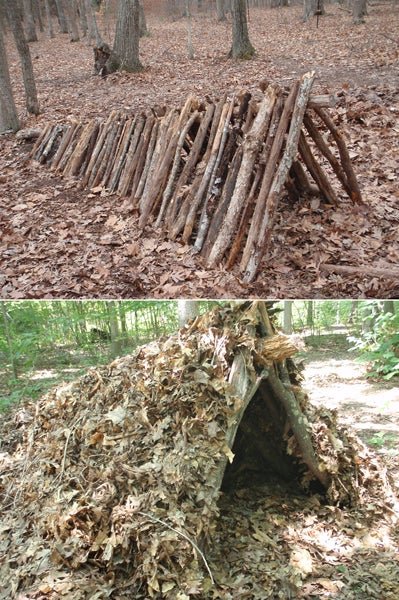
This image is property of www.outdoorlife.com.
